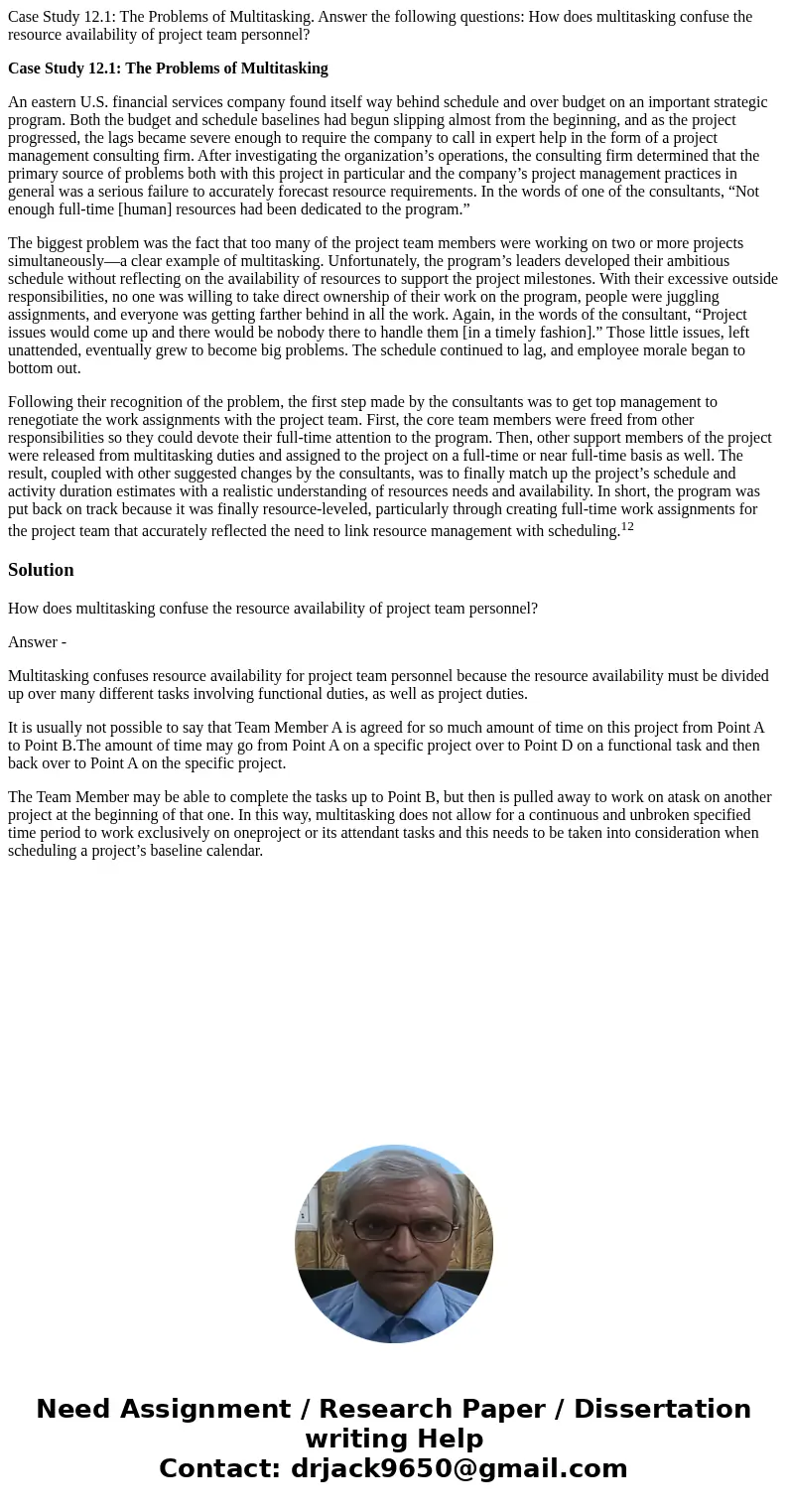Case Study 121 The Problems of Multitasking Answer the follo
Case Study 12.1: The Problems of Multitasking. Answer the following questions: How does multitasking confuse the resource availability of project team personnel?
Case Study 12.1: The Problems of Multitasking
An eastern U.S. financial services company found itself way behind schedule and over budget on an important strategic program. Both the budget and schedule baselines had begun slipping almost from the beginning, and as the project progressed, the lags became severe enough to require the company to call in expert help in the form of a project management consulting firm. After investigating the organization’s operations, the consulting firm determined that the primary source of problems both with this project in particular and the company’s project management practices in general was a serious failure to accurately forecast resource requirements. In the words of one of the consultants, “Not enough full-time [human] resources had been dedicated to the program.”
The biggest problem was the fact that too many of the project team members were working on two or more projects simultaneously—a clear example of multitasking. Unfortunately, the program’s leaders developed their ambitious schedule without reflecting on the availability of resources to support the project milestones. With their excessive outside responsibilities, no one was willing to take direct ownership of their work on the program, people were juggling assignments, and everyone was getting farther behind in all the work. Again, in the words of the consultant, “Project issues would come up and there would be nobody there to handle them [in a timely fashion].” Those little issues, left unattended, eventually grew to become big problems. The schedule continued to lag, and employee morale began to bottom out.
Following their recognition of the problem, the first step made by the consultants was to get top management to renegotiate the work assignments with the project team. First, the core team members were freed from other responsibilities so they could devote their full-time attention to the program. Then, other support members of the project were released from multitasking duties and assigned to the project on a full-time or near full-time basis as well. The result, coupled with other suggested changes by the consultants, was to finally match up the project’s schedule and activity duration estimates with a realistic understanding of resources needs and availability. In short, the program was put back on track because it was finally resource-leveled, particularly through creating full-time work assignments for the project team that accurately reflected the need to link resource management with scheduling.12
Solution
How does multitasking confuse the resource availability of project team personnel?
Answer -
Multitasking confuses resource availability for project team personnel because the resource availability must be divided up over many different tasks involving functional duties, as well as project duties.
It is usually not possible to say that Team Member A is agreed for so much amount of time on this project from Point A to Point B.The amount of time may go from Point A on a specific project over to Point D on a functional task and then back over to Point A on the specific project.
The Team Member may be able to complete the tasks up to Point B, but then is pulled away to work on atask on another project at the beginning of that one. In this way, multitasking does not allow for a continuous and unbroken specified time period to work exclusively on oneproject or its attendant tasks and this needs to be taken into consideration when scheduling a project’s baseline calendar.

 Homework Sourse
Homework Sourse